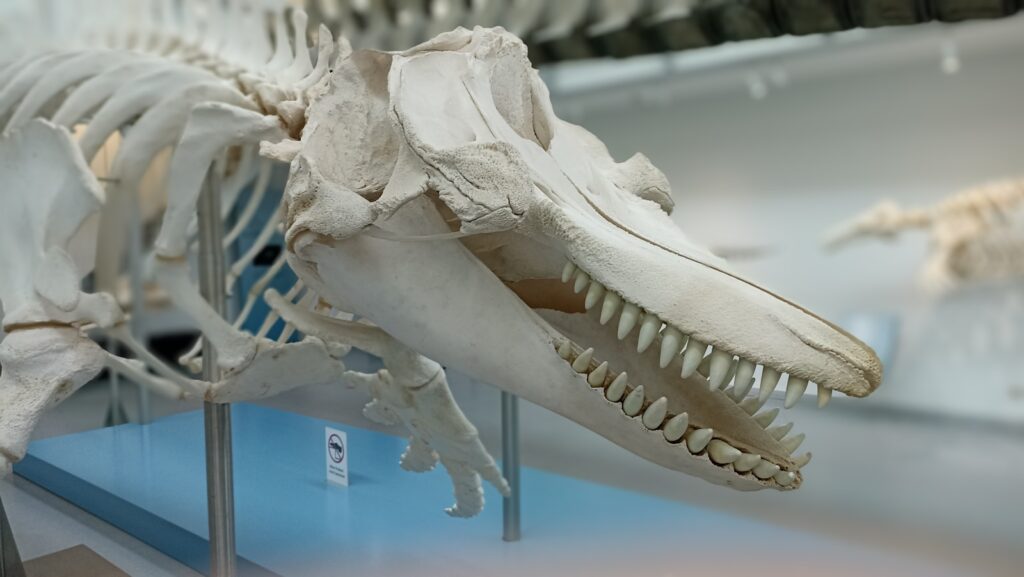Prehistoric beasts have captivated human imagination since the first fossils were discovered, so it’s no surprise that dinosaurs have stomped their way into video games across multiple generations of gaming. From educational simulations to action-packed adventures, dinosaur games offer players the chance to interact with these magnificent creatures in ways paleontologists could only dream about. This article explores the most impressive, innovative, and entertaining dinosaur video games ever created, spanning different platforms, genres, and eras of gaming history.
Jurassic Park: Operation Genesis – The Original Dino Park Builder

Released in 2003 for PC, PlayStation 2, and Xbox, Jurassic Park: Operation Genesis stands as the definitive dinosaur park management simulator. Players take on the role of park manager, tasked with creating a five-star dinosaur theme park from the ground up. What made this game truly special was its blend of business simulation with scientific accuracy, allowing players to extract DNA from fossils, breed historically accurate dinosaurs, and manage their behaviors and needs. The game featured an impressive roster of 25 dinosaur species, each with unique behaviors, preferences, and potential for disaster if containment measures failed. Operation Genesis struck a perfect balance between educational content and the thrill of watching your carefully designed park operations, or witnessing the chaos when security systems inevitably failed and visitors became impromptu dinosaur snacks.
Dino Crisis – Survival Horror with Prehistoric Predators

Capcom’s 1999 masterpiece Dino Crisis took the survival horror formula popularized by Resident Evil and replaced zombies with something potentially more terrifying—intelligent, relentless dinosaurs. Players step into the boots of Regina, a special operations agent investigating a remote research facility overrun by dinosaurs. What set Dino Crisis apart was its pioneering “panic horror” system, where encounters with dinosaurs created genuine moments of terror through unpredictable AI behavior and limited ammunition. The game’s velociraptor encounters remain particularly memorable, as these cunning predators would stalk players through corridors, ambush from unexpected locations, and even feign retreat only to circle back for another attack. The game’s blend of puzzle-solving, resource management, and dinosaur encounters in a claustrophobic setting created a uniquely terrifying gaming experience that has stood the test of time even as its graphics have aged.
ARK: Survival Evolved – Open-World Dinosaur Survival

Few games have captured the primal thrill of coexisting with dinosaurs like ARK: Survival Evolved. Released in 2017 after a lengthy early access period, ARK drops players naked and unarmed onto a mysterious island populated by prehistoric creatures and other survivors. What makes ARK stand out is its unprecedented dinosaur interaction system—players can hunt, tame, ride, and breed over 100 different prehistoric species, each with unique abilities that can aid in survival. The game’s progression system brilliantly mirrors human evolution, as players start with stone tools and primitive shelters before eventually crafting modern weapons and even science-fiction technology. ARK’s multiplayer component adds another dimension, with tribal warfare and cooperation creating complex ecosystems where dinosaurs become not just threats but valuable military assets and status symbols in an ever-evolving prehistoric society.
Turok: Dinosaur Hunter – The Revolutionary First-Person Shooter

When Turok: Dinosaur Hunter launched on the Nintendo 64 in 1997, it revolutionized console first-person shooters with its vast open environments and prehistoric enemies. Players assume the role of Tal’Set, a Native American time-traveling warrior tasked with protecting the barrier between Earth and the Lost Land. What distinguished Turok was its seamless blend of dinosaurs with science fiction elements, creating a unique setting where players battled everything from naturally-occurring velociraptors to cybernetically-enhanced T-Rexes with mounted weapons. The game’s arsenal was equally creative, ranging from traditional bows and knives to the iconic cerebral bore, which fired homing projectiles that drilled into enemies’ skulls. Turok’s ambitious rendering of massive outdoor environments with minimal fog (an impressive technical feat for the N64) established a new standard for console shooters and spawned a successful franchise that continued for multiple sequels.
Jurassic World Evolution – Modern Park Management Excellence

Frontier Developments’ Jurassic World Evolution, released in 2018, represents the modern evolution of dinosaur park management simulators. Building on the foundation established by Operation Genesis, Evolution expands every aspect of the formula with significantly improved graphics, more complex management systems, and deeper dinosaur behavior modeling. The game features over 42 dinosaur species (68 with DLC), each meticulously designed with input from paleontologists to reflect current scientific understanding. What truly elevates Evolution is its innovative genome system, where players’ genetic modifications directly impact dinosaur appearance, behavior, and visitor appeal, creating meaningful choices between scientific accuracy and commercial entertainment value. The game’s integration with the film franchise is seamless, featuring voice acting from film stars like Jeff Goldblum and missions that expand the cinematic universe’s lore while challenging players with unique management scenarios.
Monster Hunter: World – Hunting Dinosaur-Inspired Beasts

While not strictly a dinosaur game, Monster Hunter: World deserves recognition for creating some of gaming’s most compelling dinosaur-inspired creatures. Released in 2018, this action RPG revolutionized Capcom’s long-running franchise with a seamless open world and ecosystems teeming with prehistoric-inspired monsters. The game’s standout achievement is its incredibly detailed monster design and behavior, with creatures like the T-Rex-inspired Anjanath and the raptor-like Great Jagras exhibiting complex behaviors including territorial disputes, hunting patterns, and environmental interactions. Each monster features breakable body parts, realistic damage reactions, and adaptive AI that responds to player tactics. Monster Hunter’s unique gameplay loop of studying, tracking, and battling these creatures using materials harvested from previous hunts creates a deeply satisfying experience that has attracted over 20 million players worldwide, making it one of the most successful games featuring dinosaur-like creatures ever created.
Primal Carnage – Asymmetrical Multiplayer Dino Action

Primal Carnage carved out a unique niche in dinosaur gaming when it launched in 2012 by focusing exclusively on asymmetrical multiplayer combat between humans and dinosaurs. This innovative approach allowed players to experience both sides of the prehistoric conflict—taking control of specialized human classes with unique weapons and abilities, or embodying different dinosaur species with their own distinctive attack patterns. The game’s brilliant design balanced the raw power and ferocity of dinosaurs against the technological advantages of humans, creating tense multiplayer matches where strategy and coordination proved as important as reflexes. As a dinosaur player, the visceral thrill of hunting human opponents through dense jungle environments created unmatched predatory satisfaction, while human players experienced genuine panic when confronted by coordinated raptor attacks or a charging Tyrannosaurus. Primal Carnage’s focus on multiplayer dinosaur combat influenced numerous games that followed, demonstrating the enduring appeal of prehistoric predator-versus-prey gameplay.
The Isle – Dinosaur Survival Simulation

The Isle represents perhaps the most ambitious attempt to simulate the authentic experience of being a dinosaur. This early access survival game, which began development in 2015, lets players take control of various dinosaur species in a harsh open world where the only objective is survival. What separates The Isle from other dinosaur games is its commitment to realistic ecosystem simulation—players must manage hunger, thirst, stamina, and growth while navigating complex intraspecies social dynamics and interspecies predator-prey relationships. The game features meticulously researched dinosaur models with realistic proportions, movement capabilities, sensory systems, and hunting behaviors based on current paleontological understanding. Perhaps most impressively, The Isle implements a complex life cycle where players start as vulnerable juveniles and must survive long enough to reach adulthood, with each growth stage presenting unique challenges and capabilities that create a constantly evolving gameplay experience rarely seen in other dinosaur titles.
Dinosaur Fossil Hunter – Educational Paleontology Simulation

Releasing in 2022, Dinosaur Fossil Hunter takes a completely different approach by focusing on the scientific process of paleontology rather than action or survival. Players experience the complete journey from fossil discovery to museum exhibition, beginning with prospecting potential dig sites using authentic tools and techniques. What makes this game particularly valuable is its educational accuracy—players must carefully excavate fossils using proper tools, apply conservation techniques to preserve fragile specimens, and transport them safely to the laboratory. The game’s most innovative aspect is its detailed fossil reconstruction system, where players clean, repair, and assemble discovered bone fragments into complete skeletons, learning about dinosaur anatomy and classification in the process. Dinosaur Fossil Hunter stands out for making the scientific method engaging through gamification while maintaining rigorous educational standards that have earned it praise from actual paleontologists and educational institutions.
Second Extinction – Cooperative Dinosaur Extermination

Second Extinction, released in 2020, brings a fresh twist to dinosaur gaming by casting players as humanity’s last defense against mutated dinosaurs reclaiming Earth. This cooperative first-person shooter supports teams of up to three players facing overwhelming hordes of deadly, genetically-modified dinosaurs across massive map regions. What distinguishes Second Extinction is its “War Effort” metagame, where player activities across all sessions influence dinosaur population density and mutation types in different regions, creating an ever-evolving global threat map. The game’s mutation system results in visually striking and mechanically unique dinosaur variants, from acid-spitting Dilophosaurus to electrically-charged Ankylosaurs that require coordinated tactics to defeat. Second Extinction’s emphasis on vertical movement and environmental traversal creates dynamic combat scenarios where dinosaurs can attack from any direction, forcing players to remain constantly vigilant in a way that brilliantly captures the prehistoric predator-prey relationship from a modern military perspective.
Parkasaurus – Charming Dinosaur Management

Parkasaurus, released in 2020 after two years in early access, takes dinosaur park management in a delightfully different direction with its charming visual style and innovative gameplay mechanics. Beneath its cute exterior lies a surprisingly complex management simulator where players must balance dinosaur biome requirements, visitor expectations, and scientific research. What truly sets Parkasaurus apart is its unique dinosaur needs system, where each species requires specific combinations of terrain, foliage density, water features, and even privacy levels to remain healthy and content. The game’s most creative feature is its “heart” system, where dinosaurs develop emotional connections to specific staff members and exhibit complex social behaviors that affect their welfare and visitor appeal. Parkasaurus also innovates with its time-travel dinosaur acquisition system, where players must send expedition teams to specific prehistoric eras to collect eggs, adding a strategic resource management layer to the traditional park builder formula.
Horizon Zero Dawn – Post-Apocalyptic Robotic Dinosaurs

Guerrilla Games’ 2017 masterpiece Horizon Zero Dawn deserves recognition for its revolutionary reimagining of dinosaurs as mechanical entities in a post-apocalyptic setting. This action RPG presents a world where robotic creatures clearly inspired by dinosaur morphology have become the dominant “species” on Earth. The game’s “mechanical dinosaurs” like the Thunderjaw (T-Rex), Sawtooth (sabertooth), and Tallneck (Brachiosaurus) are marvels of design that perfectly blend prehistoric silhouettes with futuristic technology. What makes these creations particularly successful is their realistic behavioral patterns—herds of Grazers exhibit natural grazing behaviors, Watchers serve as vigilant pack sentinels, and apex predators patrol territories with convincing hunting routines. The game’s ingenious combat system, where players must target specific components on these mechanical beasts, creates strategic depth that mirrors the way prehistoric hunters might have exploited vulnerabilities in actual dinosaurs. Horizon Zero Dawn proves that the appeal of dinosaur forms transcends biological realism, with its mechanical interpretations capturing the same sense of awe and danger as their ancient inspirations.
Fossil Fighters – Dinosaur Collection and Battling

Nintendo’s Fossil Fighters series, beginning in 2008, successfully translated the monster-collecting formula popularized by Pokémon into a prehistoric context with surprising depth and originality. Players take on the role of Fossil Fighters who excavate, clean, and revive prehistoric creatures called Vivosaurs (based on dinosaurs and other prehistoric animals) before battling them in strategic turn-based combat. What makes Fossil Fighters special is its innovative excavation minigame, where players must carefully remove fossils from rock using drills, hammers, and brushes without causing damage—the quality of excavation directly affects the revived Vivosaur’s statistics. The battle system features remarkable strategic depth, with elemental affinities, positioning effects, and team synergies that require thoughtful teambuilding beyond simply using the strongest creatures. Throughout the series, Fossil Fighters has maintained a perfect balance between educational content about prehistoric life and engaging gameplay that has introduced millions of young players to paleontology concepts while providing a compelling alternative to traditional monster-collecting games.
Conclusion

Dinosaur video games have evolved dramatically over gaming’s history, from pixelated representations to scientifically accurate simulations that incorporate the latest paleontological findings. The best dinosaur games offer more than just prehistoric window dressing—they create unique gameplay experiences that would be impossible with any other type of creature. Whether you’re managing a Jurassic theme park, hunting as a velociraptor, or excavating fossils for scientific discovery, these games tap into our enduring fascination with these magnificent creatures that once ruled our planet. As gaming technology continues to advance, dinosaur games will undoubtedly continue to evolve, bringing us ever closer to the dream of truly experiencing what life was like during the Mesozoic era.



